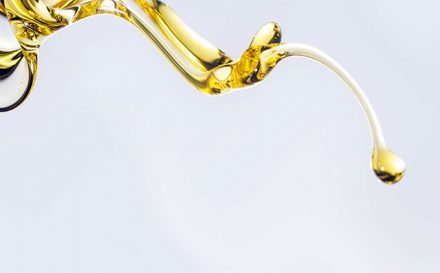Smart Key: Fashion and chemistry… a dangerous liaison? The - Denim Première Vision - Première Vision New York - Première Vision Paris
Let’s unpack the secrets of sustainable fabrics through our Smart Keys. At the heart of eco-design issues, our Smart Keys series question all the available solutions to help you become more informed in your materials sourcing. Today, let’s discover the mysteries of chemistry. Though often viewed as harmful and the opposite of ‘natural’, what are chemistry’s actual risks and benefits? Can we successfully and safely combine sustainability and chemistry?
What role does chemistry play in garment design?

If fashion is the art of transforming material into a garment, chemistry is the art of transforming material, by altering its characteristics. Viewed as a marker of innovation by some, unnatural and threatening by others, we’re surrounded by chemistry on a daily basis.
Chemical substances are added to give a new look, a new handle or special performance features to a material. Preparation, pre-treatment, dyeing, finishing, tanning: the chemical transformation of a material requires many steps before it takes on its final appearance and characteristics. Today, chemistry is a key component of our clothing and accessories.
The impact of chemical substances – allergenic, irritant, endocrine disruptor, carcinogenic, reprotoxic etc. – and their management was a particularly hot topic in the mid-2000s with the implementation of the Reach regulation in 2007 in Europe, and the revelations unearthed by Greenpeace in its “Dirty Laundry” (2011) and “Toxic Underwear of Fashion” (2012) reports.
Behind the scenes, things began to be set in motion. Under the Greenpeace Detox initiative, numerous companies committed to reducing 11 classes of substances identified in these reports. This approach invites the industry to transform itself, to control the management of substances identified as hazardous and to exclude them from its value chain.

Read also: Smart Key: Microfibres, macro-problem?
Natural or synthetic chemicals?
The confusion that sometimes arises is that chemistry can involve various components, both natural and synthetic. Even the most natural materials are treated with chemicals to achieve their final form.
In the 20th century, synthesis chemistry was seen as a symbol of modernity, a way to free nature from the problems of supply, bad weather and seasonality. However, in the 21st century, it came to be seen as a destroyer of nature because of the pollution engendered.
Why do people worry about chemistry?
- Precisely because it’s everywhere! Everything around us is a result of a chemical transformation, and without chemical processes many of the products that surround us could not be produced.
- The synthetic molecules used remain a matter of special concern, and potentially of risk, as the impact of certain substances and molecular chains may not be well known.
- The number of substances used: as technologies evolve, new active ingredients enter the value chain and need to be observed in order to guarantee their harmlessness over the long term. Exposure is multiple, and traces are frequently found in organisms and the environment.
- Continuation and bioaccumulation: what is the life span and long-term impact of these molecules? Various substances are used in the creation of products and their cumulative effect on humans and nature remains a concern.
- The dose makes the poison. Repeat exposure can generate a chronic toxicity, or a short and significant exposure can generate an acute toxicity, depending on the conditions of the exposure to the substances.
So how do we protect ourselves from these impacts? The answer in 3 Smart Keys.
Smart Key #1 : Green chemistry, reconciling chemistry and nature

Green chemistry emerged in the 1990s as a way to prevent or minimize chemical toxicity. Based on 12 principles, it promotes more conservative and safer practices by analyzing products and their impact on the environment in real time, to detect the presence of chemical agents considered toxic, even in trace amounts. The goal is to choose raw materials wisely to prevent any risk. The use of renewable resources and alternatives to polluting solvents and auxiliaries is fundamental.
Thus one of the main pillars is to anticipate upstream, rather than manage repercussions after the production process. The fact is that prevention is paramount. Even with extensive treatments, once discharged downstream from the developments, it might be impossible to decontaminate the toxic effluents and achieve complete restoration.
Smart Key #2 : Monitoring inputs

While Reach already provides a solid framework in Europe, in the absence of a global regulation, it is up to companies and their suppliers to tackle the issue head on and establish strict specifications (lists of restricted or banned substances) and a continuous process of improvement.
To assist them, the ChemSec platform identifies the substances to replace in their production chain and also rates the most advanced chemical producers, along with a marketplace providing information on safe alternatives that can be used.
In addition, the BeHive® database makes it possible to evaluate chemical inputs. After registering a label via a simple scan, an inventory is generated to ensure compliance with a brand’s environmental requirements or certification prerequisites.
The Oeko-tex® Eco passport is also an upstream certification that tests and guarantees the use of non-toxic chemical inputs in the leather and textile value chains.
Smart Key #3 : Monitoring from A to Z

Many certifications will screen operations, establishing strict substance bans or values for any chemical input used, even when of natural origin, as with the controls performed by GOTS or the EU Ecolabel.
One of the key functions of Bluesign® is to assess production facilities to ensure that chemicals are handled, used and released in a non-toxic manner. Bluesign® supports safer and more sustainable developments by indicating harmful products and processes that should be abandoned in favor of more responsible alternatives.
Now frequently found, OEKO-TEX® standard 100 for textiles and OEKO-TEX® Leather standard verify the absence of substances potentially toxic to humans. These tests can be done on the material and/or on finished products to ensure non-contamination during a product’s transformation. As such they verify compliance with the Reach regulation and serve as a kind of “antechamber” for Reach, by going beyond it and setting threshold values for certain toxic chemicals, even if these are not yet legally recognized as such.
The combination of OEKO-TEX® standard 100 or OEKO-TEX® Leather standard with OEKO-TEX®STeP (certifying the environmental commitment of the production units) results in OEKO-TEX® Made in Green. This certification attests that the finished textile or leather product is free of harmful substances and that it was developed through responsible processes and working conditions.
In any case, beyond inspecting internal production operations, monitoring effluent and gaseous emissions is key. Here is where problems often arise. Gaseous emissions and the disposal of sludge and wastewater can, without rigorous treatment, pose a threat to people and the environment, with serious consequences, including chronic diseases, impacts on biodiversity, eutrophication of water and more – regardless of whether the chemical operations are natural or synthetic.
As a result, the ZDHC Foundation seeks to eliminate all potential toxic discharges. ZDHC, Zero Discharge of Hazardous Chemicals, is a roadmap developed in response to Greenpeace’s Detox campaign, initiated by various players in the textile and leather industry. The list of restricted substances indicates the inputs to exclude or to use according to defined concentrations.
Learn more about sustainability with our Smart Keys series:
- The hidden face of cotton
- Cellulosic materials
- Biodegradability
- Traceability
- Alternative plant-based materials
- Ecological and ethical accessories
- Polyester recycling
- The secrets of sports technical fabrics
- Eco-packaging
